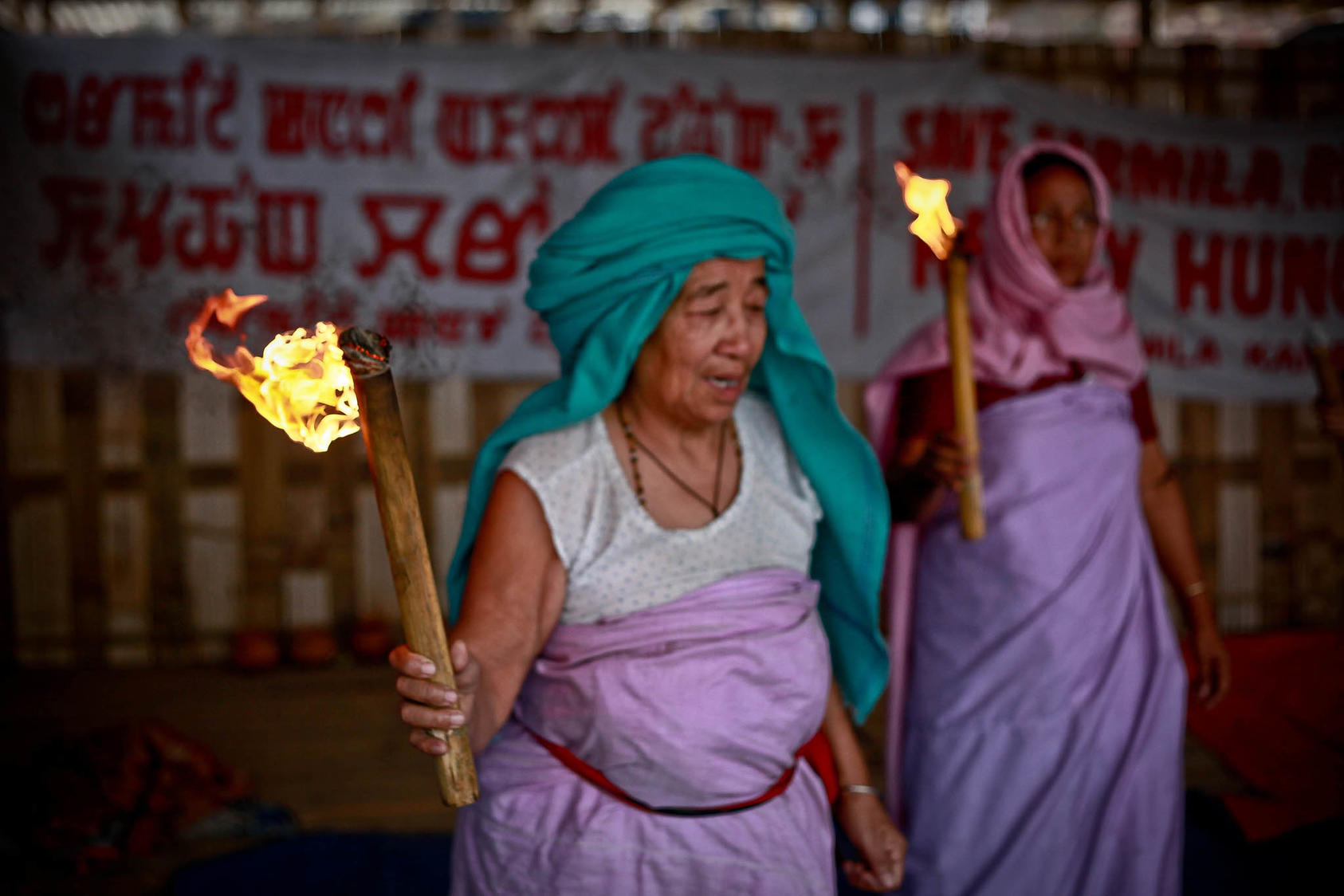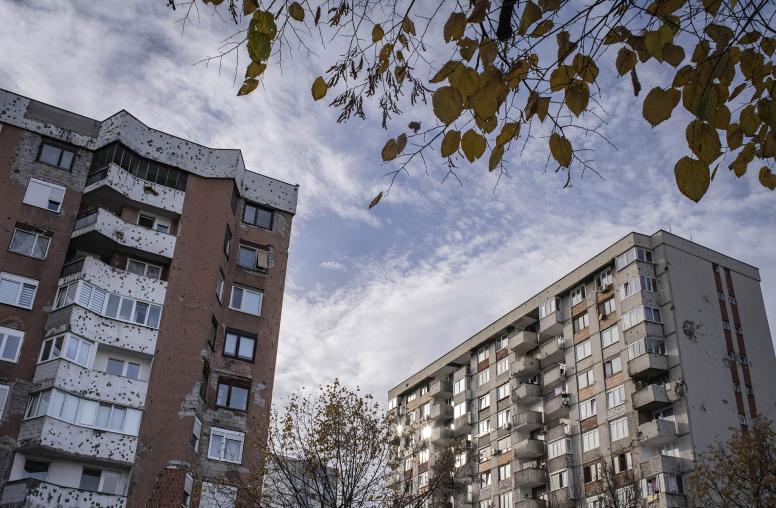Indigenous Pathways to Peace
A better understanding of Indigenous peacebuilding doesn’t just bolster peace processes — it can reshape them.
Many of the world’s Indigenous peoples live in unstable areas, struggling to survive as conflicts, transnational organized criminal networks and extractive projects upend their lives and livelihoods. Unfortunately, peace processes in these contexts are often negotiated at high political levels without the inclusion of Indigenous peoples. This can undermine the chances for success, as Indigenous peoples are a crucial population in some of the world's longest-running conflicts. But even further, excluding Indigenous people means overlooking how Indigenous traditions, rituals, and religious and political practices can help advance peace and resolve deadly conflict.

Understanding Indigenous Peacebuilding
Oftentimes, experts are inclined to view border spaces or conflict hotspots where Indigenous peoples live as “ungoverned,” emphasizing the need for state capacity building, transitional justice and stable governance. But in actuality, there are often already-existing institutions on the ground that are going unseen, since they look different than the cultural norms outsiders associate with governance.
So while efforts to include Indigenous peoples in peace processes, such as in Colombia, are a good step toward inclusion in formal processes, there is much we can learn from Indigenous peoples about peace processes themselves. By better understanding how Indigenous peoples’ own cultures and traditions approach peacebuilding, we can better include Indigenous peoples’ efforts in formal peace processes and better understand what resources are already out there mitigating, resolving and preventing conflict.
The Great Law of Peace of the Iroquois Confederacy
A great example of an oft-overlooked method for Indigenous governance and peacebuilding are the belts of the Iroquois Confederacy.
The Six Nations of the Iroquois Confederacy are considered by some to be the world’s first people’s republic and the first to make a national constitution — which the Iroquois call the “Gayanashagowa,” or the Great Law of Peace.
Written through belts of beads and passed down in oral tradition, the Gayanashagowa allowed for the peaceful coexistence of multiple Indigenous peoples by codifying a number of inter- and intra-national matters.
The most famous of the belts, the Hiawatha belt, records how many warring nations chose to establish one common law, and live as many nations in one confederacy. This peace treaty still exists to this day. The belt is a material artifact that symbolizes the story of becoming a confederation. Other belts and oral tradition carried forward the practices of governance that regulated the confederacy. In this sense, the peace treaty and the constitution were one and the same, belted together — but distinct.
Women with Flaming Bamboo Torches in Manipur
When we think of human rights enforcement, we often think of formal processes and monitoring mechanisms. But for more than a century, Indigenous peacebuilders and women’s organizations in Manipur, a region in what is today Northeast India, have mobilized to advocate for human rights in different ways.
During an armed conflict that erupted in Manipur in the 1970s, the Indigenous women of Manipur, strengthened by earlier efforts, began a unique movement of peacebuilding known as the Meira Paibi or “women who wield the torch.”
Armed with flaming bamboo torches, the Indigenous women of Manipur patrolled the streets at night to protect the people, as well as maintain and negotiate peace. The women, mostly mothers and grandmothers, leveraged their social positions as peaceful women to their advantage, as they were largely respected throughout their protests.
Participants would also take turns in the night, and when not patrolling, they would sleep in specially made bamboo huts to maintain a peace vigil in resistance of state and non-state armed groups. The vigil became a way for people to protest against human rights abuses, maintain safety on the streets and for the women torchbearers to directly deal with security forces at night.
The Meira Paibi is now a powerful method for maintaining peace in communities — one that does not have a readily comparable counterpart in established peace processes. And as Manipur again suffers from ethnic conflict, thousands of Indigenous women have taken the safety of civil society into their own hands once more by reigniting the vigils.
Gummaa and Siinqee in Ethopia
In the Oromia region of Ethiopia, there is a peacebuilding process known as the “Jarsummaa” that helps maintains a culture of peace at the local and administrative level. In this process, community elders — who are seen as a respected authority — oversee dispute resolution, lead mediation and resolve conflict.
And specifically for the Oromo people of the region, there is another method of peacebuilding and reconciliation known as “guma,”a ritualized process of exclusion and reconciliation. In this system, an individual who has caused a wrong in the community and refuses to reconcile or atone for it is temporarily removed from social life. Once someone is ready to return, they must offer some form of compensation — in the form of truth, property or money — to restore justice. This process is effective locally, absolving the wrongdoer and offering justice to the victims while preventing further unrest.
Another practice of the Oromo nation, known as the “siinqee,” is initiated by married women and implemented with community elders. Siinqee is an Afan Oromo word that is synonymous with a thin stick women hold after marriage. The Oromo people believe that women are messengers of peace, and women can use the siinqee stick to create a buffer zone between different warring parties. The stick, heralding back to the earliest days of diplomacy, protects women as peacemakers during dispute and violent conflict.
These practices are all relevant today. In the case of Jarsummaa and guma — similar to the Hiawatha belt — the justice process differs from what one might assume “typical” justice after conflict looks like. But the process functions nonetheless and is effective at the local level in resolving disputes.
And like the Meiri Paibi, the practice of siinqee leverages Oromo women’s social standing as peacebuilders to create a custom that is respected by the community. While it might not resemble a “formal” process for governance or maintaining peace, it too is effective at the local level because its legitimacy is not imposed, but rather builds on societal norms and traditions.
There is a deep need for legitimate and trusted processes for conflict resolution, both at the local and provincial level, and these tools offer legitimacy that can be used to de-escalate conflict or to inform a broader Oromo vision through elder-led dialogues.
Global Summit on Indigenous Peacebuilding
The absence or weakness of formal state mechanisms can be supplemented through engagement with Indigenous mechanisms that already have established legitimacy — from Indigenous methods of treaty creation and commemoration to Indigenous ways of restoring justice, protecting the community and resolving conflict.
To advance Indigenous inclusion in peace processes and enhance global understanding of how Indigenous peoples already work for peace — both in formal processes and at local, regional and national levels — USIP is bringing together 50 extraordinary Indigenous peacebuilders to participate in a global summit.
The aim of this global summit is to empower Indigenous leaders, to advance expert understanding of how Indigenous people are affected by deadly conflict, and to share knowledge of Indigenous approaches to peacebuilding that have worked for centuries.
Ultimately, the summit will help facilitate a global network of Indigenous peacebuilders, negotiators and mediators. The practices outlined here are just a few of the many practices to be covered at the summit that will not only advance Indigenous inclusion and leadership but also advance the global understanding of the resources that Indigenous peoples already have and use on the ground, every day, to prevent, mitigate and resolve deadly conflict.



